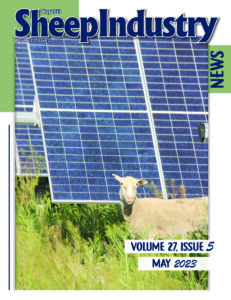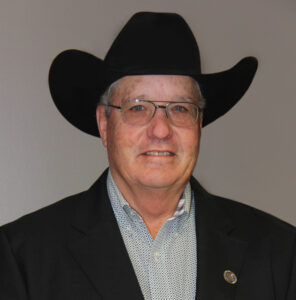PARAND REZAEI
ASI Communications Assistant
Andrew Weaver is an assistant professor and small ruminant extension specialist at North Carolina State University. He grew up in central Michigan where he was active in 4-H livestock programs. He attended Michigan State University majoring in animal science. While at MSU, Andrew was a member of the meat judging team and worked at the Sheep Teaching and Research Center. He completed his master’s degree at Virginia Tech studying terminal sire options for hair sheep producers. That research led him to West Virginia University, where he completed his Ph.D. in Dr. Scott Bowdridge’s parasite immunology lab. His research and extension interests focus on utilization of genetic tools and management practices to improve parasite resistance, performance and end-product value of small ruminants in the Southeastern United States. He also serves as co-chair of ASI’s Genetic Stakeholders Committee and on the board of the National Sheep Improvement Program.
I have a 70 percent teaching, 30 percent extension appointment. I do a lot of teaching, but then on the research and extension side of things everything’s pretty applied. A lot of it focuses on the parasites, it’s a component of everything we do because it is the biggest challenge in sheep production here in the Southeast. How do we manage the sheep in a way that we reduce exposure to parasites or if they are exposed, how do we make those animals more fit to respond to that parasite infection? A lot of it’s the interface between genetics and nutrition, how do we feed them, manage them, breed them, so that they’re not impacted by the parasite as severely.
We’ve been studying feed efficiency for about a year now, and trying to measure as many phenotypes, collect data on feed intake as well as performance traits and try to quantify efficiency to see which lambs are more efficient and if it’s something that we can breed for and make more feed efficient lambs with feed being one of the highest input costs. We have lambs that convert three to one versus lambs that convert six to one, so if we could identify and breed more of those lambs that convert three to one, we cut our feed bill in half. So that’s one of the newer projects we’re going after.
it all comes back to parasites and grass management. We’re blessed here in the Southeast to have grass almost year around. If you’re a good grass manager, you can graze just about 365 days a year. There might be a month or two that you have to get off of it depending on how many animals and how much land you have. We have forages like fescue that have pros and cons. Fortunately, fescue doesn’t impact sheep as severely as it impacts cattle. And we can utilize that some to our advantage on the small ruminant side of things and look at how we can integrate sheep into existing cattle operations. We’ve got a lot of cow-calf operations here in the Southeast. So, those producers already own the land and cows, can they diversity their operations? Producers can better manage risk by adding in a different species, because they can utilize the same land mass and have sheep and cows. You can also have more marketing opportunities. There are potentially benefits from a parasite and predation standpoint, as well. Sometimes the cows can actually provide some protection for the sheep if they are housed together.
The challenges are feed resources. Feed is more expensive here in North Carolina than in the Midwest. The vast majority of our grains come in by railcar from the Midwest and we have an additional shipping cost. We generally run at least 80 cents to a dollar over the market, and that could be challenging. Supplemental feeding is really expensive, but at the same time we can grow a lot of grass. So, we don’t have to supplement as much.
Summers get really, really hot, and parasites get really, really bad. The growing season where I’m from in Michigan is much shorter. There are still parasites up there, but the length of time in the year when parasites can really be a problem is much shorter. It may be mid-July or August. It depends on the year, but your parasite pressure may set in much later in the year. Where here, we have animals that can get pretty severely infected by April. So, we have to deal with parasites a lot longer in the year and that becomes a big challenge.
We sit here at the university, and we can sometimes get in this little bubble of our research ideas and what we’re doing but at the end of the day our goal is to serve producers. The challenges that they’re having, we want to help address those and figure out innovative new ways we can address those things. North Carolina is not the biggest sheep producing state, but I think it’s growing and there is optimism here. I get phone calls multiple times a week from people either they’re getting into sheep, or they’ve got a friend or a neighbor that’s getting into sheep and wanting to learn about management practices.
The more we can do lambing schools, handling workshops, basic management stuff that the folks in this part of the country are really after, the better. They are new and excited about it. They want to get into the sheep business. They want to be successful with it. They see opportunity in it. And I think that’s really encouraging.
We’re here on the East Coast and we have tons of lamb consumption, especially within the non-traditional trade, the ethnic market. There are a couple of plants here in North Carolina that are processing a substantial number of sheep and goats every week and marketing those animals into Atlanta, Charlotte and Raleigh areas, as well as up and down the East Coast. Right now, they’re bringing a lot of those animals in from out of state because you can’t find them here. They just don’t exist here.
One of my goals is how can we increase production here in North Carolina, so that we can meet their slaughter demand and they don’t have to truck lambs in from other places to meet their quotas. So, I guess there’s a lot of optimism for the future and opportunity out there.



